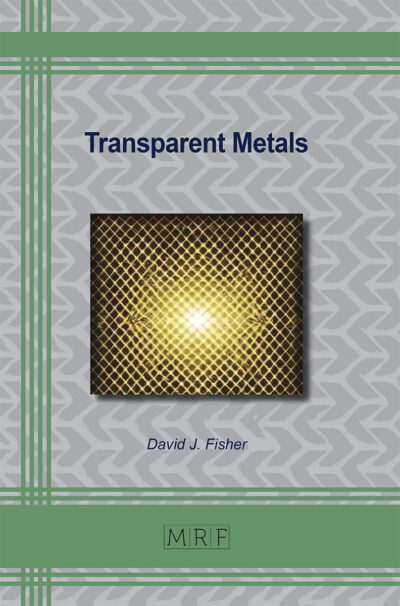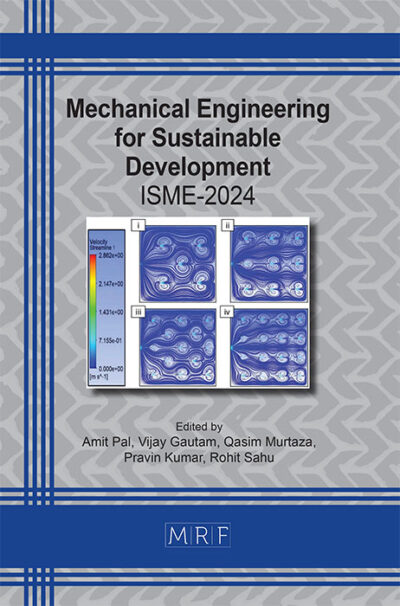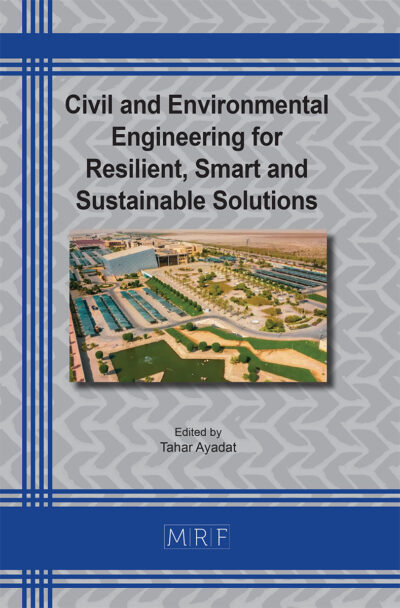Advancements in green sustainable concrete technologies for sustainable development in Saudi Arabia: A review in light of vision 2030
Nayeemuddin MOHAMMED, Dalya M ALSHALI, Andi ASIZ, Tahar AYADAT, Mohammad Ali KHASAWNEH, Danish AHMED, Tasneem SULTANA
Abstract. Saudi Arabia’s Vision 2030 initiative emphasizes sustainable development, including the construction sector’s shift towards environmentally friendly practices. This comprehensive review focuses on the advancements and challenges of green sustainable concrete (GSC) in Saudi Arabia, aligning with Vision 2030’s goals. The review examines the key components of GSC, such as recycled aggregates, supplementary cementitious materials, and alternative binders, highlighting their potential in reducing carbon emissions and enhancing durability. Additionally, the review discusses the implementation of sustainable practices in the production, transportation, and construction phases of GSC. Challenges such as limited local availability of sustainable materials and the need for updated regulations are also addressed. The review concludes with recommendations for future research and policy changes to further promote the adoption of GSC in Saudi Arabia’s construction industry, supporting Vision 2030’s vision for a sustainable future.
Keywords
Concrete, Sustainable, Green Concrete, Recycled Aggregate, Construction
Published online 2/25/2025, 8 pages
Copyright © 2025 by the author(s)
Published under license by Materials Research Forum LLC., Millersville PA, USA
Citation: Nayeemuddin MOHAMMED, Dalya M ALSHALI, Andi ASIZ, Tahar AYADAT, Mohammad Ali KHASAWNEH, Danish AHMED, Tasneem SULTANA, Advancements in green sustainable concrete technologies for sustainable development in Saudi Arabia: A review in light of vision 2030, Materials Research Proceedings, Vol. 48, pp 271-278, 2025
DOI: https://doi.org/10.21741/9781644903414-30
The article was published as article 30 of the book Civil and Environmental Engineering for Resilient, Smart and Sustainable Solutions
![]() Content from this work may be used under the terms of the Creative Commons Attribution 3.0 license. Any further distribution of this work must maintain attribution to the author(s) and the title of the work, journal citation and DOI.
Content from this work may be used under the terms of the Creative Commons Attribution 3.0 license. Any further distribution of this work must maintain attribution to the author(s) and the title of the work, journal citation and DOI.
References
[1] E.-S.S. Abu Seif, A.R. Sonbul, B.A.H. Hakami, E.K. El-Sawy, Experimental study on the utilization of dune sands as a construction material in the area between Jeddah and Mecca, Western Saudi Arabia, Bull. Eng. Geol. Environ. 75 (2016) 1007–1022. https://doi.org/10.1007/s10064-016-0855-9
[2] H.Z.H. Alsharif, S. Tong, Green Product Innovation Strategies for Environmental Sustainability in the Construction Sector, J. Contemp. Res. Soc. Sci. 1 (2019) 126–135. https://doi.org/10.33094/26410249.2019.16.126.135
[3] N. Mohammed, A. Asiz, M.A. Khasawneh, H. Mewada, T. Sultana, Machine learning and RSM-CCD analysis of green concrete made from waste water plastic bottle caps: Towards performance and optimization, Mech. Adv. Mater. Struct. (2023) 1–9. https://doi.org/10.1080/15376494.2023.2238220
[4] O.K.M. Ouda, H.M. Cekirge, S.A.R. Raza, An assessment of the potential contribution from waste-to-energy facilities to electricity demand in Saudi Arabia, Energy Convers. Manag. 75 (2013) 402–406. https://doi.org/10.1016/j.enconman.2013.06.056
[5] D. Gardner, R. Lark, T. Jefferson, R. Davies, A survey on problems encountered in current concrete construction and the potential benefits of self-healing cementitious materials, Case Stud. Constr. Mater. 8 (2018) 238–247. https://doi.org/10.1016/j.cscm.2018.02.002
[6] N. Mohammed, P. Palaniandy, F. Shaik, Optimization of solar photocatalytic biodegradability of seawater using statistical modelling, J. Indian Chem. Soc. 98 (2021) 100240. https://doi.org/10.1016/j.jics.2021.100240
[7] N. Mohammed, P. Palaniandy, F. Shaik, Pollutants removal from saline water by solar photocatalysis: a review of experimental and theoretical approaches, Int. J. Environ. Anal. Chem. 103 (2023) 4155–4175. https://doi.org/10.1080/03067319.2021.1924160
[8] P. Dutta Pramanik, B. Mukherjee, S. Pal, T. Pal, S.P. Singh, Green Smart Building: Requisites, Architecture, Challenges, and Use Cases, in: 2019: pp. 1–50. https://doi.org/10.4018/978-1-5225-9754-4.ch001
[9] S. Kabir, A.A. Al-Ismaeel, A.Y.B. Aeshah, F.S. Al-Sadun, Sustainable Management Program for Construction Waste, (n.d.).
[10] M.S. Imbabi, C. Carrigan, S. McKenna, Trends and developments in green cement and concrete technology, Int. J. Sustain. Built Environ. 1 (2012) 194–216. https://doi.org/10.1016/j.ijsbe.2013.05.001
[11] M.N. Amin, K. Khan, Mechanical Performance of High-Strength Sustainable Concrete under Fire Incorporating Locally Available Volcanic Ash in Central Harrat Rahat, Saudi Arabia, Materials 14 (2021) 21. https://doi.org/10.3390/ma14010021
[12] H. Alabduljabbar, H. Mohammadhosseini, M. Md. Tahir, R. Alyousef, Green and sustainable concrete production using carpet fibers waste and palm oil fuel ash, Mater. Today Proc. 39 (2021) 929–934. https://doi.org/10.1016/j.matpr.2020.04.047
[13] R. Asghar, M.A. Khan, R. Alyousef, M.F. Javed, M. Ali, Promoting the green Construction: Scientometric review on the mechanical and structural performance of geopolymer concrete, Constr. Build. Mater. 368 (2023) 130502. https://doi.org/10.1016/j.conbuildmat.2023.130502
[14] Y.H. Mugahed Amran, M.G. Soto, R. Alyousef, M. El-Zeadani, H. Alabduljabbar, V. Aune, Performance investigation of high-proportion Saudi-fly-ash-based concrete, Results Eng. 6 (2020) 100118. https://doi.org/10.1016/j.rineng.2020.100118
[15] M.S.M. Almulhim, M.W. Al Masmoum, Optimizing Concrete Grade for a Sustainable Structural Design in Saudi Arabia, Buildings 14 (2024) 860. https://doi.org/10.3390/buildings14040860
[16] N. Mohammed, P. Palaniandy, F. Shaik, H. Mewada, Statistical Modelling of Solar Photocatalytic Biodegradability of Seawater Using Combined Photocatalysts, J. Inst. Eng. India Ser. E (2023). https://doi.org/10.1007/s40034-023-00274-8
[17] A. Akhtar, A.K. Sarmah, Construction and demolition waste generation and properties of recycled aggregate concrete: A global perspective, J. Clean. Prod. 186 (2018) 262–281. https://doi.org/10.1016/j.jclepro.2018.03.085
[18] A. Ossa, J.L. García, E. Botero, Use of recycled construction and demolition waste (CDW) aggregates: A sustainable alternative for the pavement construction industry, J. Clean. Prod. 135 (2016) 379–386. https://doi.org/10.1016/j.jclepro.2016.06.088
[19] K.M. Rahla, R. Mateus, L. Bragança, Comparative sustainability assessment of binary blended concretes using Supplementary Cementitious Materials (SCMs) and Ordinary Portland Cement (OPC), J. Clean. Prod. 220 (2019) 445–459. https://doi.org/10.1016/j.jclepro.2019.02.010
[20] D.K. Panesar, 3 – Supplementary cementing materials, in: S. Mindess (Ed.), Dev. Formul. Reinf. Concr. Second Ed., Woodhead Publishing, 2019: pp. 55–85. https://doi.org/10.1016/B978-0-08-102616-8.00003-4
[21] N.R. Rakhimova, A review of calcined clays and ceramic wastes as sources for alkali-activated materials, Geosystem Eng. 23 (2020) 287–298. https://doi.org/10.1080/12269328.2020.1768154
[22] S. Boonjaeng, P. Chindaprasirt, K. Pimraksa, Lime-calcined clay materials with alkaline activation: Phase development and reaction transition zone, Appl. Clay Sci. 95 (2014) 357–364. https://doi.org/10.1016/j.clay.2014.05.002
[23] N. Mohammed, Characterization of sustainable concrete made from wastewater bottle caps using a machine learning and RSM-CCD: towards performance and optimization, in: 2023: pp. 38–46. https://doi.org/10.21741/9781644902790-4
[24] N. Mohammed, P. Palaniandya, F. Shaik, H. Mewada, Experimental and Computational analysis for optimization of seawater biodegradability using photocatalysis., IIUM Eng. J. 24 (2023) 11–33. https://doi.org/10.31436/iiumej.v24i2.2650
[25] A.I. Almulhim, I.R. Abubakar, Developing a sustainable water conservation strategy for Saudi Arabian cities, Groundw. Sustain. Dev. 23 (2023) 101040. https://doi.org/10.1016/j.gsd.2023.101040
[26] M.G. Alexander, Y. Ballim, K. Stanish, A framework for use of durability indexes in performance-based design and specifications for reinforced concrete structures, Mater. Struct. 41 (2008) 921–936. https://doi.org/10.1617/s11527-007-9295-0
[27] B. Chi, W. Lu, M. Ye, Z. Bao, X. Zhang, Construction waste minimization in green building: A comparative analysis of LEED-NC 2009 certified projects in the US and China, J. Clean. Prod. 256 (2020) 120749. https://doi.org/10.1016/j.jclepro.2020.120749
[28] Md.U. Hossain, S.T. Ng, P. Antwi-Afari, B. Amor, Circular economy and the construction industry: Existing trends, challenges and prospective framework for sustainable construction, Renew. Sustain. Energy Rev. 130 (2020) 109948. https://doi.org/10.1016/j.rser.2020.109948
[29] A. Alqahtany, Green Roofs as an Approach to Enhance Urban Sustainability: A Study of Public Perception in Riyadh, Saudi Arabia, Buildings 12 (2022) 2202. https://doi.org/10.3390/buildings12122202
[30] A.S. Abdelfatah, S.W. Tabsh, Review of Research on and Implementation of Recycled Concrete Aggregate in the GCC, Adv. Civ. Eng. 2011 (2011) e567924. https://doi.org/10.1155/2011/567924
[31] A. Al-Hamrani, M. Kucukvar, W. Alnahhal, E. Mahdi, N.C. Onat, Green Concrete for a Circular Economy: A Review on Sustainability, Durability, and Structural Properties, Materials 14 (2021) 351. https://doi.org/10.3390/ma14020351
[32] N. Mohammed, P. Palaniandy, F. Shaik, H. Mewada, D. Balakrishnan, Comparative studies of RSM Box-Behnken and ANN-Anfis fuzzy statistical analysis for seawater biodegradability using TiO2 photocatalyst, Chemosphere 314 (2023) 137665. https://doi.org/10.1016/j.chemosphere.2022.137665
[33] N. Makul, R. Fediuk, M. Amran, A.M. Zeyad, G. Murali, N. Vatin, S. Klyuev, T. Ozbakkaloglu, Y. Vasilev, Use of Recycled Concrete Aggregates in Production of Green Cement-Based Concrete Composites: A Review, Crystals 11 (2021) 232. https://doi.org/10.3390/cryst11030232
[34] M. Amran, A.M. Onaizi, R. Fediuk, N.I. Vatin, R.S. Muhammad Rashid, H. Abdelgader, T. Ozbakkaloglu, Self-Healing Concrete as a Prospective Construction Material: A Review, Materials 15 (2022) 3214. https://doi.org/10.3390/ma15093214
[35] S. Luhar, T.-W. Cheng, I. Luhar, Incorporation of natural waste from agricultural and aquacultural farming as supplementary materials with green concrete: A review, Compos. Part B Eng. 175 (2019) 107076. https://doi.org/10.1016/j.compositesb.2019.107076
[36] A. Siddika, Md.A.A. Mamun, W. Ferdous, A.K. Saha, R. Alyousef, 3D-printed concrete: applications, performance, and challenges, J. Sustain. Cem.-Based Mater. 9 (2020) 127–164. https://doi.org/10.1080/21650373.2019.1705199
[37] H. Alhumayani, M. Gomaa, V. Soebarto, W. Jabi, Environmental assessment of large-scale 3D printing in construction: A comparative study between cob and concrete, J. Clean. Prod. 270 (2020) 122463. https://doi.org/10.1016/j.jclepro.2020.122463
[38] M. Amran, S. Debbarma, T. Ozbakkaloglu, Fly ash-based eco-friendly geopolymer concrete: A critical review of the long-term durability properties, Constr. Build. Mater. 270 (2021) 121857. https://doi.org/10.1016/j.conbuildmat.2020.121857
[39] B. Suhendro, Toward Green Concrete for Better Sustainable Environment, Procedia Eng. 95 (2014) 305–320. https://doi.org/10.1016/j.proeng.2014.12.190
[40] F. Althoey, W.S. Ansari, M. Sufian, A.F. Deifalla, Advancements in low-carbon concrete as a construction material for the sustainable built environment, Dev. Built Environ. 16 (2023) 100284. https://doi.org/10.1016/j.dibe.2023.100284
[41] J. Nilimaa, Smart materials and technologies for sustainable concrete construction, Dev. Built Environ. 15 (2023) 100177. https://doi.org/10.1016/j.dibe.2023.100177
[42] H. Marey, G. Kozma, G. Szabó, Green concrete materials selection for achieving circular economy in residential buildings using system dynamics, Clean. Mater. 11 (2024) 100221. https://doi.org/10.1016/j.clema.2024.100221
[43] K.M. Liew, A.O. Sojobi, L.W. Zhang, Green concrete: Prospects and challenges, Constr. Build. Mater. 156 (2017) 1063–1095. https://doi.org/10.1016/j.conbuildmat.2017.09.008
“”












